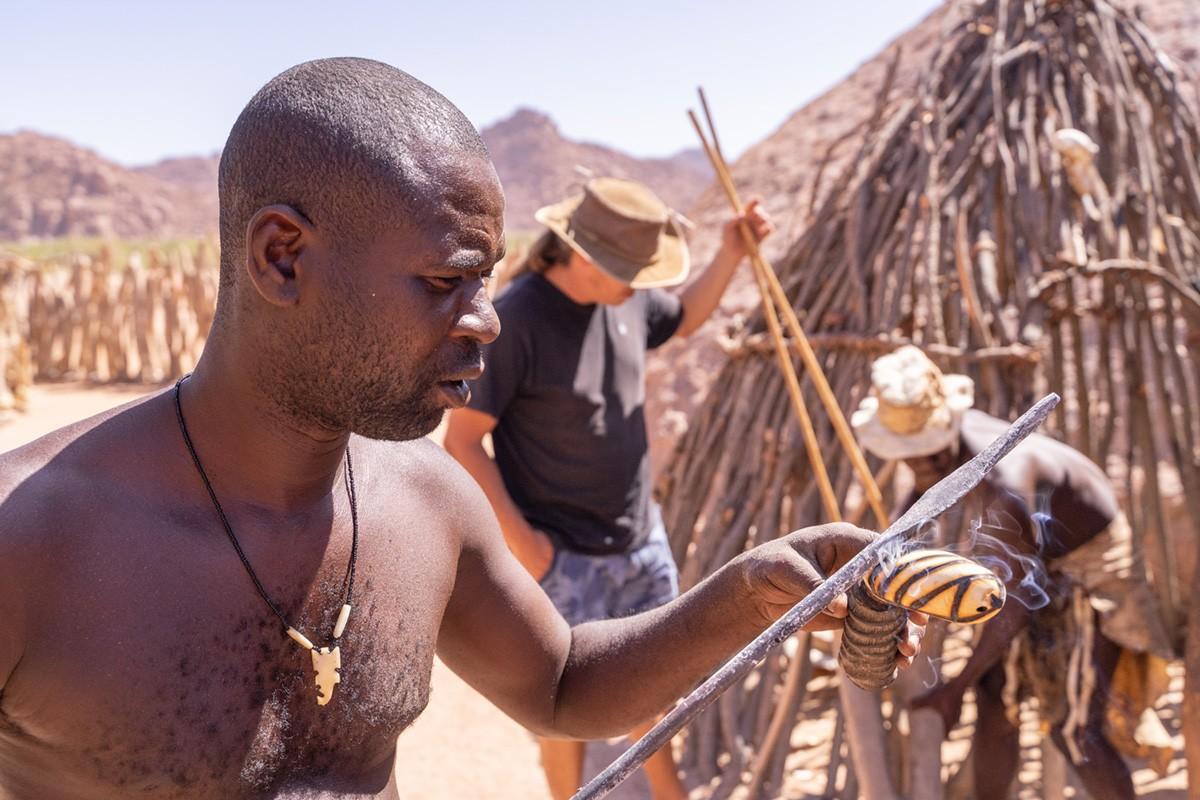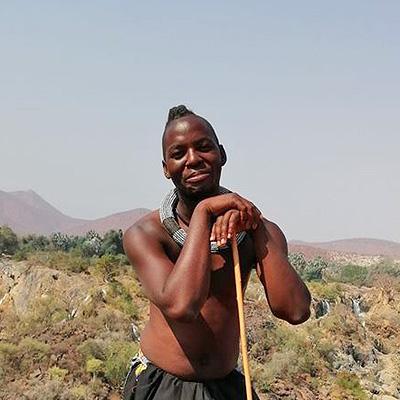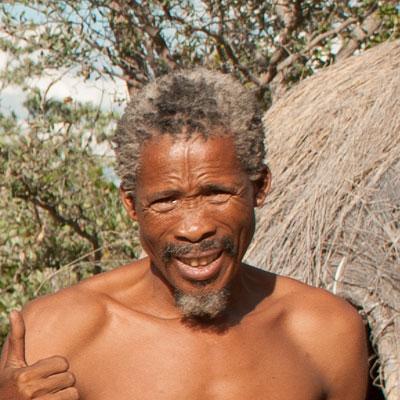Fascinating culture of the San
Project tour November 2019 - Visiting the Damara and Ovahimba Living Museums
This year a project trip to visit two of the LCFN museums was done by Sebastian Dürrschmidt, Vojtěch Šeba, Ralf Kühn (LCFN members), Ingo Kühn and photography student Gustav Lorenz.
The aim was to assess the state and the past development of the Damara museum at Twyfelfountain and the Ovahimba museum located close to Opuwo which had been opened three years ago. This was done in order to find opportunities for possible improvement.
Damara museum
The Damara museum is, with the highest amounts of visitors, the most successful from a commercial point of view. The museum’s program, which includes an introduction to herbal medicine, tribal language, metalworking, traditional games, a bushwalk and a small demonstration of dancing and singing, is executed in a fast manner.
During this program the visitors get a basic impression of Southwest African culture, but unfortunately not so much of the nearly forgotten culture of the Damara people. To truly fulfill the definition of a “Damara museum”, additional information should be made available about the history, way of life and language of this tribe.

This could be achieved, for example, by installing an informative board at the entrance to the museum to serve as a quick introduction to their cultural specifics. The program as well as the garments of the actors should be designed more authentically. It might also make sense to create an informative brochure that would be available for sale.
The oversized jewelry and crafts shop underscores the commercial focus of this museum.
In my opinion it is important that, apart from the financial success, we preserve the educational focus of the museum. Otherwise there is a risk of the program becoming too arbitrary, or (in the worst-case scenario) a farce.
All new pictures from the Damara museum
Ovahimba Museum
Three years ago the Ovahimba museum was opened north of Opuwo. Not only have the visitor numbers steadily increased since then, but also a very well-located campsite has grown next to the museum village. The program for the museum visitors has improved.
A significant portion of the museum’s success can be attributed to its manager John, who has proven to be a valuable partner. The museum has become a real “living” cultural village as 26 women moved in along with their children and husbands.

After a visit to the museum a detailed meeting has been organized with the museum’s employees, the manager John and us. The positive past progress as well as possible future improvements were discussed.
The idea of providing written information to the visitors was suggested here as well. Selling a bilingual brochure with information about all six living museums presents itself as a good solution.
At present time extreme drought is decimating the cattle population and the flora and fauna of the Kaokoveld area. The LCFN has purchased a supply of hay for the village to help mitigate the negative effects of this drought on their livestock.
In cooperation with the museum’s employees a marked tourist trail has been established between the campsite and a nearby hill in order to boost the locations attractiveness. The hilltop provides an excellent view of the Omungunda village and the surrounding landscape.
In conclusion, more continuous effort, support, good ideas and time will be necessary to create and further develop sustainable “living” museums in Namibia as places to learn about traditional African culture.
All new photos from the Ovahimba museum
Dr.Ralf Kühn
When you subscribe to the blog, we will send you an e-mail when there are new updates on the site so you wouldn't miss them.


























